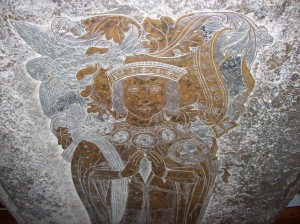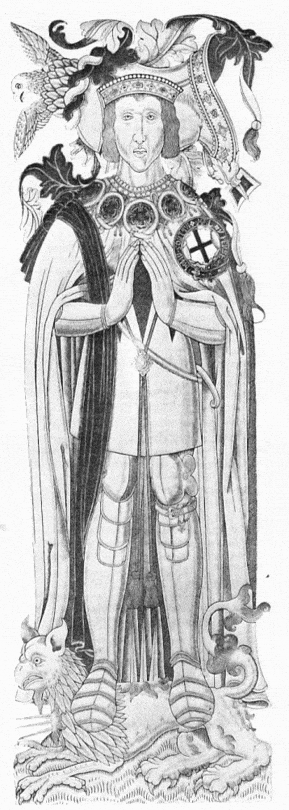
On this day in history, 12 March 1539, Thomas Boleyn, Earl of Wiltshire and Ormond, died at Hever Castle, Kent, the Boleyn family home. He was in his early sixties.
Wiltshire’s servant, Robert Cranwell, wrote to Thomas Cromwell the next day to give him news of Wiltshire’s death:
“My good lord and master is dead. He made the end of a good Christian man.”1
Although two of his children, George and Anne, had been executed as traitors to the crown in May 1536 and he had been stripped of his office of Lord Privy Seal in June 1536, Wiltshire had done his duty to his remaining family and to his monarch, and had climbed his way back into royal favour just as families like the Staffords and Howards had done before him. He had helped squash the rebels of the Pilgrimage of Grace rebellion in late 1536 was present at Prince Edward’s baptism in October 1537. Historian Eric Ives describes how Wiltshire diligently went to Order of the Garter functions, even lending Thomas Cromwell his chain and best Garter badge at one point, and how he was back at court by January 1538.2 In July 1538, three months after his wife’s death, there were rumours that “my lord of Wolshyre will marry lady Margaret Dowglas”.3 Obviously, the marriage never took place, but Thomas Boleyn must have been high in favour for it to be rumoured that he was going to marry the King’s niece.
In April 1539, Henry VIII paid 16l. 13s. 4d. to his chaplain, William Franklyn, Dean of Windsor, “for certain oraisons, suffrages and masses to be said for the soul’s health of th’erle of Wilts, late deceased”, which is hard evidence that Thomas was back in favour at his death.4
Wiltshire was laid to rest in St Peter’s Church, Hever, the church on the green just outside Hever Castle. Visitors to the church can pay their respects at his tomb, which is topped with a beautiful memorial brass showing him dressed in the full robes and insignia of a Knight of the Garter, including the badge on his left breast and garter around his left knee. Wiltshire’s head is depicted resting on a helmet surmounted by his daughter Anne Boleyn’s falcon badge and his feet rest on a griffin. The inscription on his tomb reads:
“Here lieth Sir Thomas Bullen, Knight of the Order of the Garter, Erle of Wilscher and Erle or Ormunde, which decessed the 12th dai of Marche in the iere of our Lorde 1538.”
In those days the new calendar year didn’t start until 25 March, Lady Day or the Feast of the Annunciation of the Blessed Virgin, so that’s why the brass inscription gives his date of death as 1538 and we say 1539.
The Thomas Boleyn of fiction is often a manipulative, greedy man, or even a ‘pimp’, but that’s not the man I’ve got to known through my research into the Boleyn family. You can read more about him in my article In Defence of Thomas Boleyn, father of Anne Boleyn.

Notes and Soures
- LP (Letters and Papers, Foreign and Domestic, Henry VIII) xiv. Part 1, 511
- Eric Ives (2004) The Life and Death of Anne Boleyn, 353.
- LP xiii. Part 1. 1419
- LP xiv. Part 2, p309